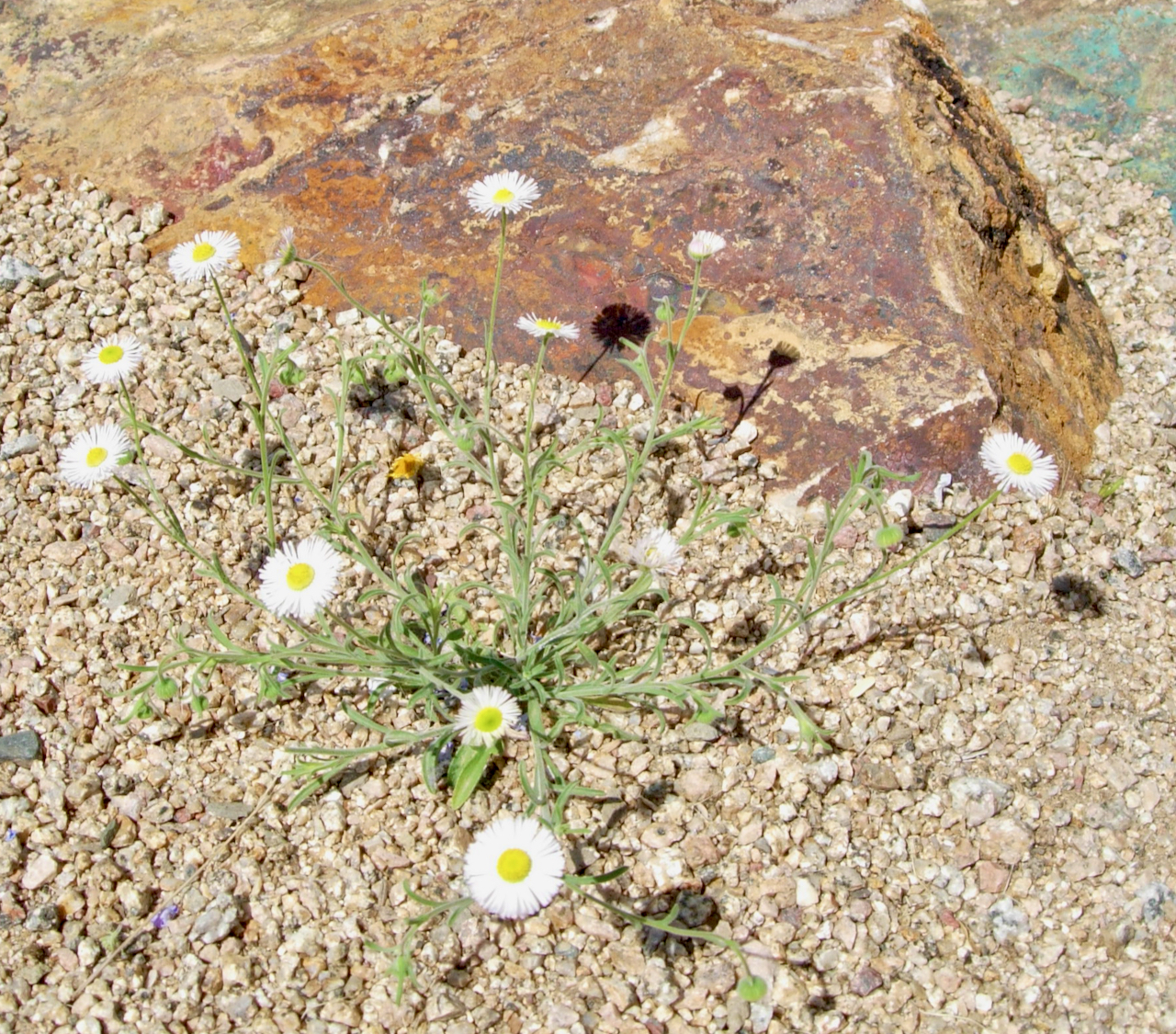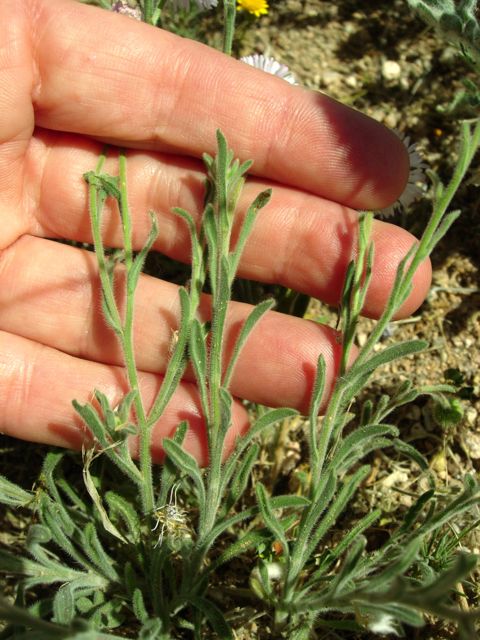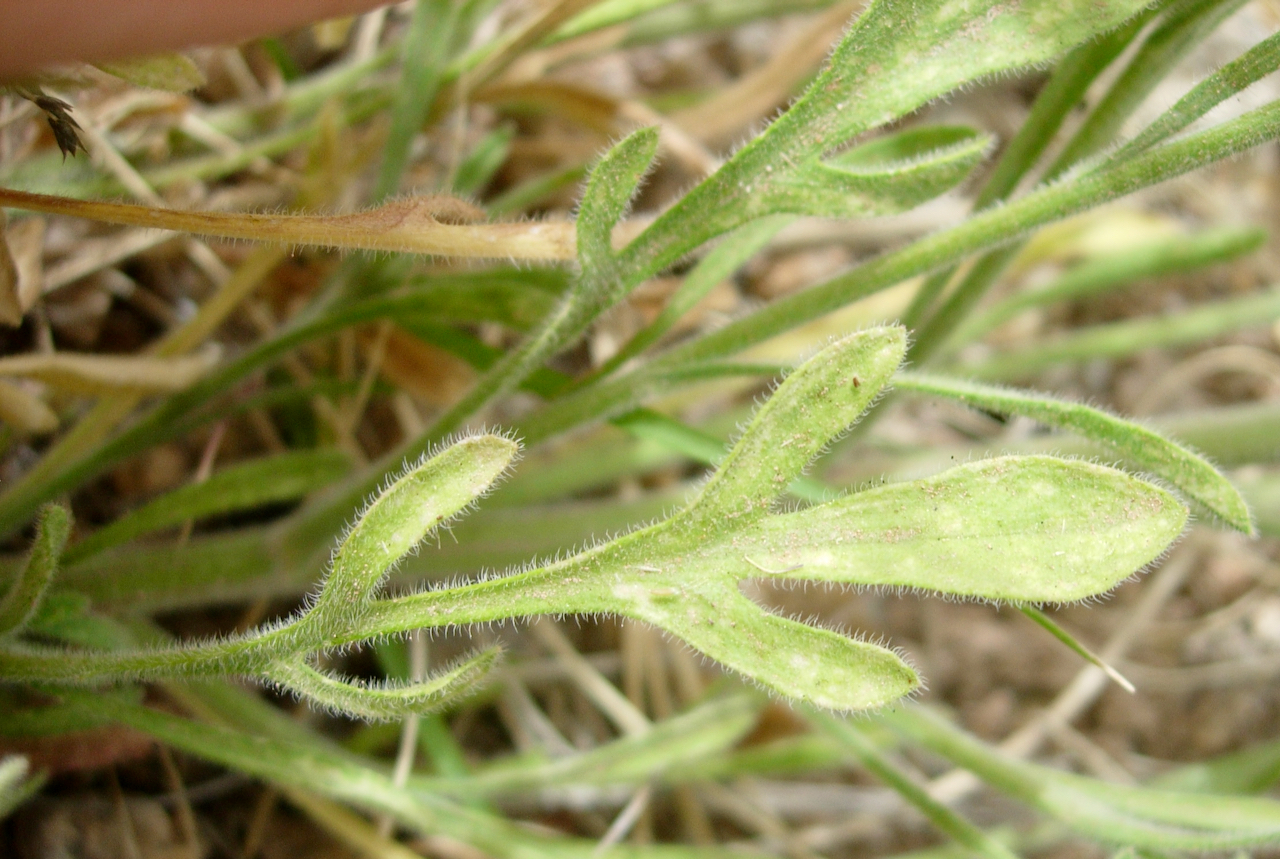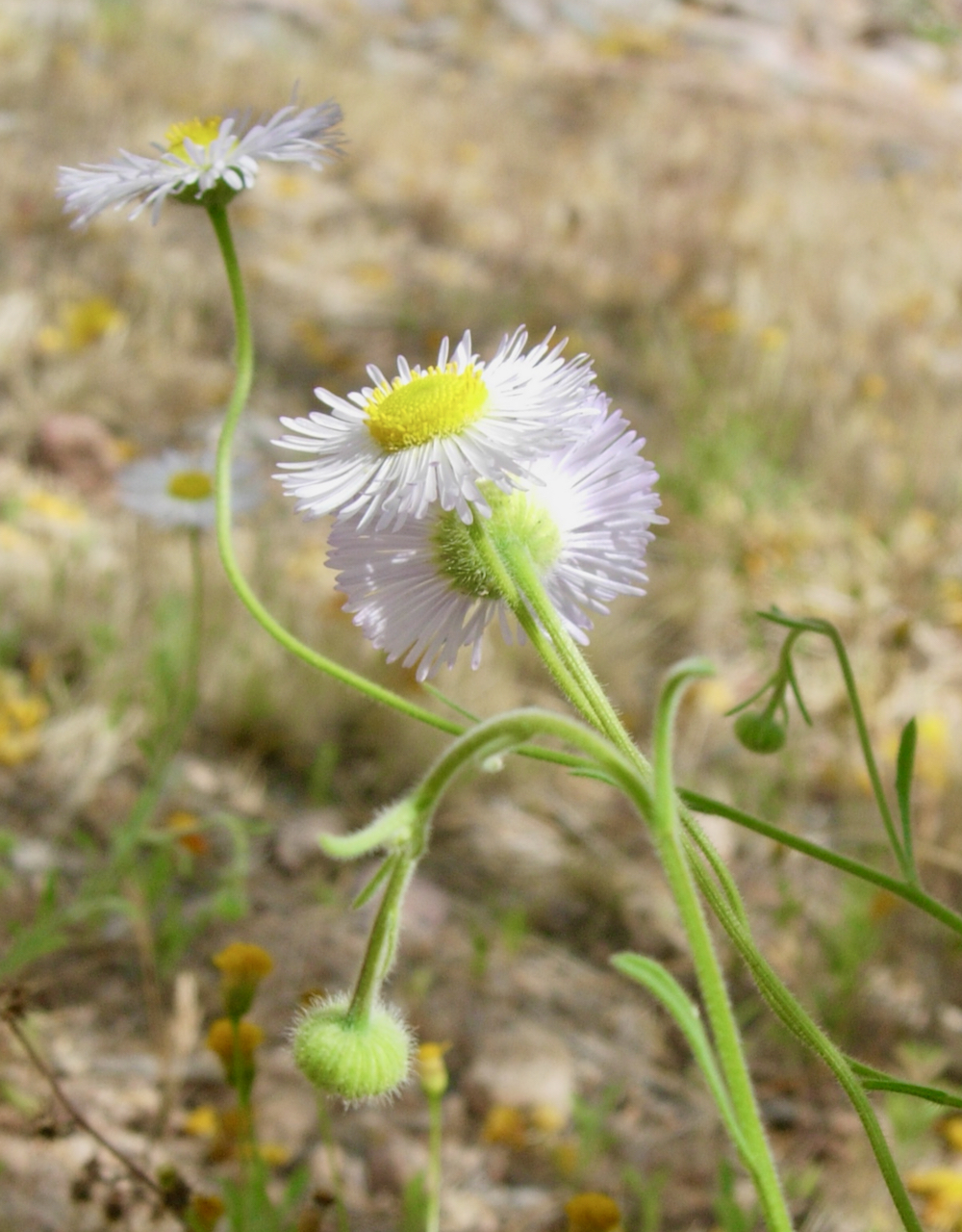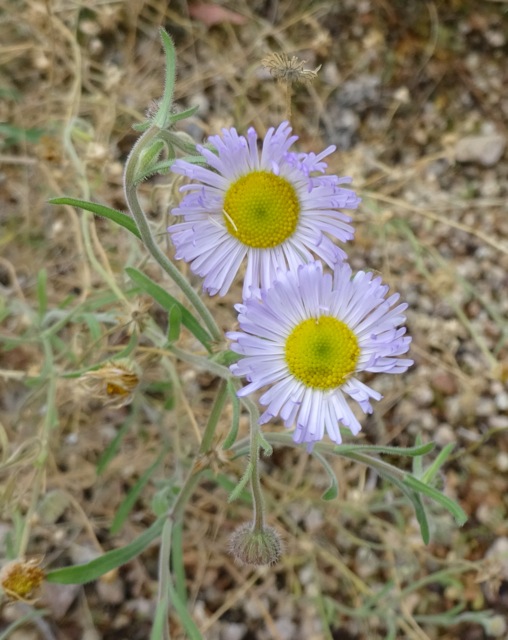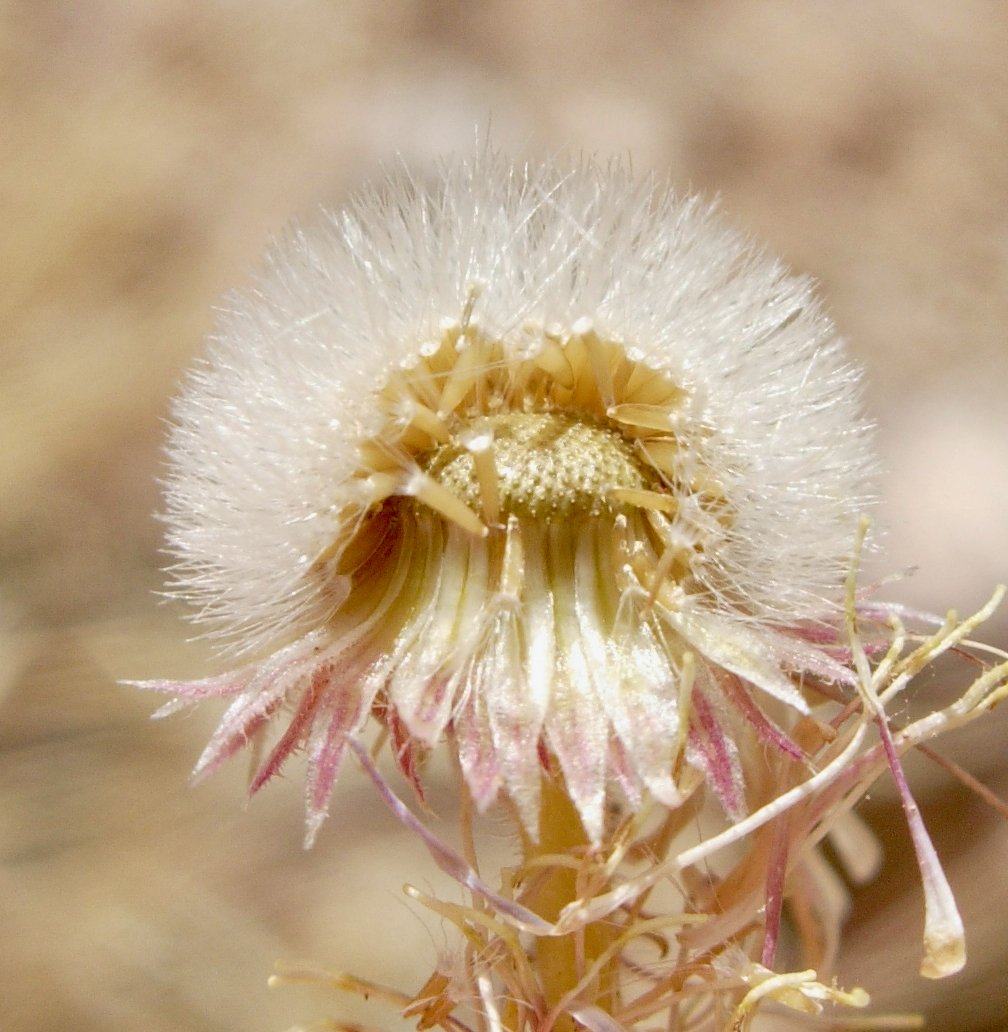Spreading Fleabane
Erigeron divergens
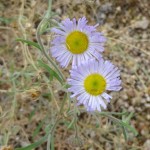
About the Plant
Spreading fleabane is a short-lived perennial that grows wild in many parts of the western United States. It is found in disturbed areas, such as housing developments, where it will bloom almost year-round. Don't be surprised if spreading fleabane crops up near your irrigated plants, to stay for just a year or two. It can help fill in between plants and soften the overall appearance of a garden. If the plant begins looking a little thin, just cut back to the basal foliage
There are over 150 fleabanes found in the United States and it is often difficult to tell them apart. Spreading fleabane is common in our area, but you may see other fleabanes as well.
Wildlife value: the flowers attract small butterflies, especially in seasons when little else is in bloom.
More Information
Weekly Plant on spreading fleabane
Map of distribution in US (yellow indicates plant is native but rare)
Technical botanical description from SEINet
ID Characteristics
This plant is in the Asteraceae - the aster family.
Spreading fleabane grows to 18-24 inches, the flower stems reaching above a clump of basal leaves. With age the flower stems will become lax, making the plant wider than it is high.
The alternate leaves are long and slender, about 1-2 inches long. The lower leaves can be 3" long and may have just a few lobes. The leaves on the upper flower stem are shorter than those below.
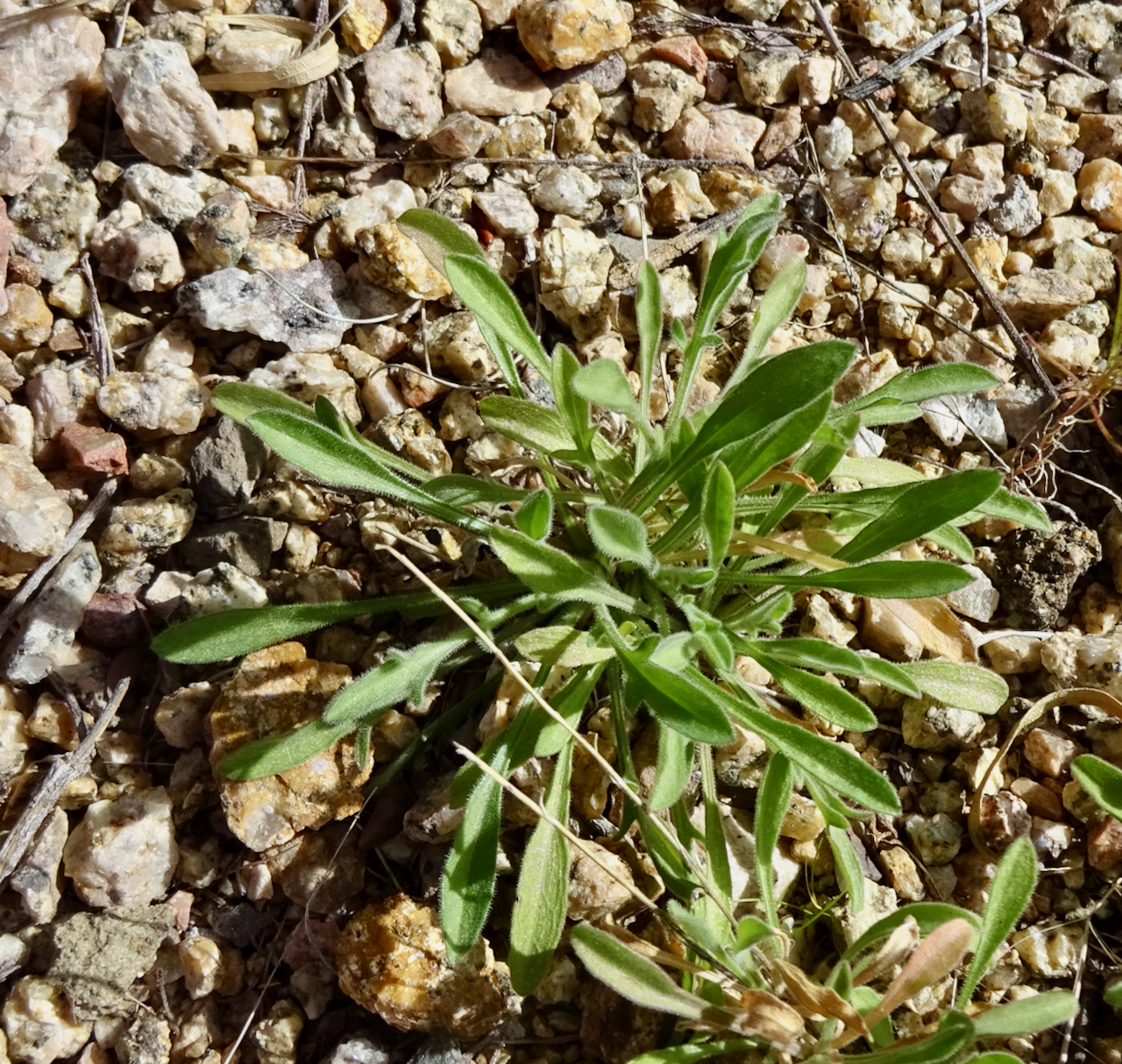 Overwintering basal leaves may be "spoon-shaped": wider at the tip than the base (photo above).
Overwintering basal leaves may be "spoon-shaped": wider at the tip than the base (photo above).
The longest leaves can be 3" long and may have a few lobes.
The flower buds are nodding. The flower stalks straighten as the flower opens.
The 0.5 to 0.75 inch flowers have a yellow center surrounded by many strap-like petals. The petals are pink in bud then white when the flower first opens, drying to lavender. Often all three colors can be seen on the same plant. The flower head closes at night and may stay closed on cold days. It opens in response to warmth and sunlight.
The seed head resembles a dandelion, with the seeds in the center of the ball. In this photo some of the seeds have started to fall away, retaining the white "fluff" on one end.
